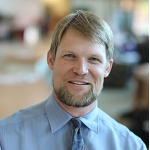Advances in Loop Quantum Cosmology
A special issue of Universe (ISSN 2218-1997). This special issue belongs to the section "Field Theory".
Deadline for manuscript submissions: closed (31 July 2021) | Viewed by 2358
Special Issue Editors
Interests: quantum field theory; quantum gravity; quantum cosmology; traversable wormholes; casimir effect; quantum information theory; quantum thermodynamics; philosophical foundations of quantum mechanics; multiverse concepts, especially those related the sciences and philosophy
Special Issues, Collections and Topics in MDPI journals
Interests: noncommutative spectral geometry; string/M-theory cosmology; loop quantum cosmology; group field theory; gravitational waves; cosmic (super)strings
Special Issues, Collections and Topics in MDPI journals
Special Issue Information
Dear Colleagues,
The appearance of spacetime singularities is generic to general relativity and is viewed as an indicator of the conditions under which the classical theory of gravity breaks down. Loop quantum cosmology (LQC) is a finite, symmetry reduced model of loop quantum gravity (LQG) that is believed to eliminate big bang (and big crunch) singularities. LQC replaces a standard big bang singularity with a big bounce, wherein a preceding contracting universe avoids a singularity by the repulsive quantum effects of LQG that become strong for physics at the Planck scale. LQC has been a growing field since its birth around 1999. The proposal has matured significantly over 20-plus years. However, significant advancements are still appearing. This Special Issue of Universe is devoted to developments in the field over the last year. We invite you to submit to this Special Issue an original research or review article on any topic relevant to the field.
Topics of particular interest for this Special Issue include:
- symmetry reductions;
- minisuperspace construction of LQC models;
- consistent formalism construction;
- dynamics and evolution of LQC models;
- CMB predictions and observational signatures of LQC;
- LQC quantization; and
- bouncing versus non-bouncing LQC solutions.
Prof. Dr. Gerald Cleaver
Prof. Dr. Mairi Sakellariadou
Guest Editors
Manuscript Submission Information
Manuscripts should be submitted online at www.mdpi.com by registering and logging in to this website. Once you are registered, click here to go to the submission form. Manuscripts can be submitted until the deadline. All submissions that pass pre-check are peer-reviewed. Accepted papers will be published continuously in the journal (as soon as accepted) and will be listed together on the special issue website. Research articles, review articles as well as short communications are invited. For planned papers, a title and short abstract (about 100 words) can be sent to the Editorial Office for announcement on this website.
Submitted manuscripts should not have been published previously, nor be under consideration for publication elsewhere (except conference proceedings papers). All manuscripts are thoroughly refereed through a single-blind peer-review process. A guide for authors and other relevant information for submission of manuscripts is available on the Instructions for Authors page. Universe is an international peer-reviewed open access monthly journal published by MDPI.
Please visit the Instructions for Authors page before submitting a manuscript. Submitted papers should be well formatted and use good English. Authors may use MDPI's English editing service prior to publication or during author revisions.






